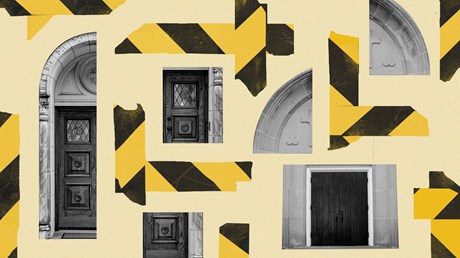The divisions between these “parties” are important. So are the divisions within them.

Jesus’ caution in Luke 12:2, “There is nothing concealed that will not be disclosed, or hidden that will not be made known,” certainly proved prescient in the case of white evangelicals. Oceans of ink have been spilled on nearly every facet of their existence, while recitations of their sins have become a daily ritual on social media. The scrutiny is so intense that it is easy to forget it is a relatively new phenomenon, especially among scholars.
There was rising interest in evangelicalism in the 1980s and 1990s, amid the heyday of the Moral Majority and the Christian Coalition. Over the course of those decades, a cohort of evangelical historians, led by the likes of George Marsden and Mark Noll, salvaged their tradition from the academic dustheap. Having set out with the relatively modest goal of identifying “gold among the dross,” in Marsden’s choice turn of phrase, they ended up rewriting the history of Christianity in the United States, with evangelicalism as the throughline.
This entailed rehabilitating the fundamentalists, whose pugnaciousness was excessive, to be sure, but also understandable given the extent of early-20th-century liberal Protestants’ assault on Christian orthodoxy. The neo-evangelicals fared better in this revised story too. While the worlds that developed around Billy Graham exhibited serious flaws—with anti-intellectualism and jingoistic nationalism at the top of the list—they at least resisted the temptation to bend Christian doctrine to fit contemporary whims. With the mainline on a long and well-intentioned slide into de facto apostasy, evangelicals were the truest heirs of a Protestant lineage stretching back through Jonathan Edwards and ...
from Christianity Today Magazine
Umn ministry


.gif)

.gif)
.gif)
